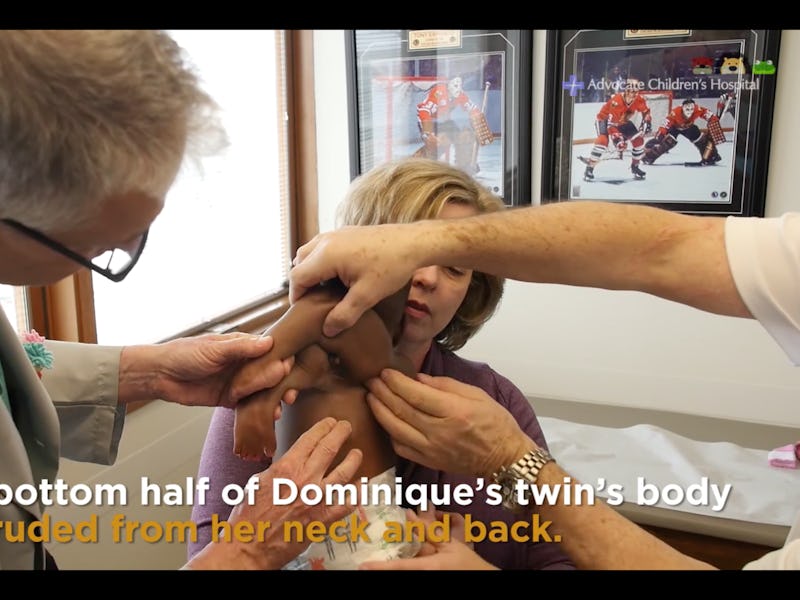Baby Born With 2 Spines and 4 Legs Recovering From Surgery
Dominique's body couldn't support her parasitic twin.

There’s an old cliché about new parents playfully counting their baby’s fingers and toes over and over, just to make sure. In 10-month-old Dominique’s case, her parents came up with an unusual number. But that’s all changed now, thanks to some United States doctors.
You see, Dominique is not your average baby. She was born with four legs and two spines. This sounds strange, but there’s a simple explanation: Dominique entered the world with an undeveloped parasitic conjoined twin. A spine and an extra pair of legs protruded from the baby’s back, evidence of a conjoined twin that had failed to grow beyond an embryo.
In early March, Dominique’s parents entrusted her to Children’s Medical Mission West, and she was flown from her home in Ivory Coast to Advocate Children’s Hospital in Illinois.
At ACH, a team of surgeons successfully removed the parasitic conjoined twin. Dominique is now recovering with a host family until she flies home to rejoin her parents. Doctors expect her to fully recover and live a normal, healthy life.
Dominique’s case represents an event that’s rare, random, and unpredictable. Conjoined twins randomly occur in about one out of 100,000 births, and conjoined parasitic twins occur even less often. Dominique most likely grew from a conjoined twin embryo. Whereas fraternal twins develop from two eggs, and identical twins develop from a single zygote that splits into two embryos very soon after fertilization, conjoined twins develop from a zygote that splits extremely late.
This x-ray shows Dominique's two spines before surgery.
This is what probably happened while Dominique was developing in utero. In this case, her embryo dominated, while that of her conjoined twin did not survive. Until the surgery, Dominique’s body supported the legs and spine, so they were a part of her. But her heart and lungs had to work overtime to support them. This surgery helped prevent what almost surely would have been an early death from the added strain on her organs.